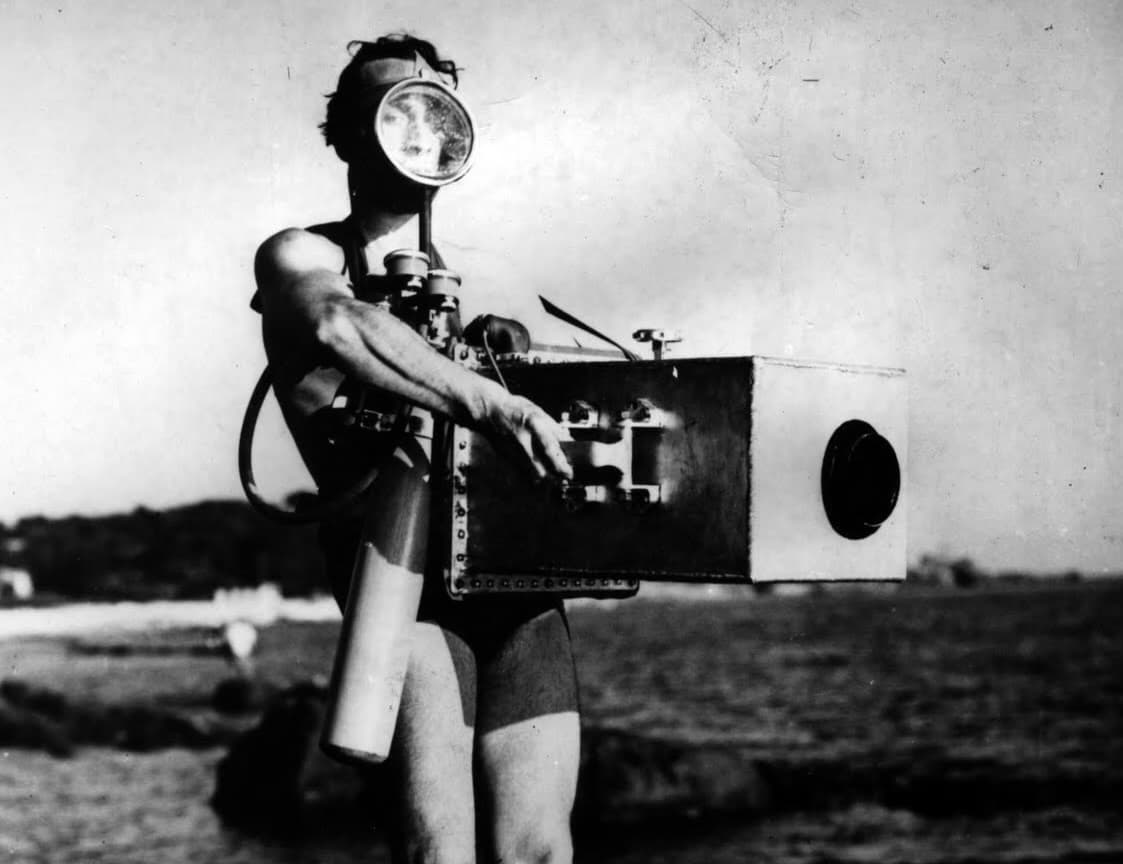
Science is Cinema: The Films of Jean Painlevé
Born in a politically influential family in November 1902, French photographer and filmmaker Jean Painlevé developed an affinity for the sea from a young age. Fashioning his first early water-resistant camera from a mere 4x4 box and a glass-bottled lens cover, Painlevé’s scientific filmography stretches over decades of oceanic exploration and zoological documentation. In secondary school at Paris’ Louis Le Grand lycée, Painlevé founded an association of Socialist Revolutionary Students—a political affiliation that would later tie his work to the early surrealists. In 1922, studying medicine alongside Jacques-André Boiffard (an assistant of filmmaker Man Ray) at Sorbonne University, Painlevé would develop his foundation in the anatomical and zoological sciences. As Painlevé left university and began to shoot his first films, he remained closely connected with contemporaries such as Antonin Artaud, Man Ray, Luis Buñuel, and Jean Vigo throughout the surrealist movement. Painlevé became one of the first scientists to introduce filmmaking into research and documentation. He later co-founded the Association for Photographic and Cinematic Documentation in the Sciences in 1930 to promote his early films. These early short films on marine life gained traction within both the European Avant-garde and the scientific community. Painlevé combined the techniques of zoological and analytic documentation with the aesthetic of early cinema, earning him the reputation as the father of scientific film. His black-and-white underwater cinematography mirrored trance-like qualities inherent to early surrealist cinema. While never proclaiming himself a part of this movement, Painleve’s filmography, as uncategorizable as his life, reached the intersection of two seemingly contrasting disciplines—science and cinema. Painlevé died in July 1989, yet with over 200 films and numerous articles, books, exhibitions, and lectures, his work forever remains integral to both the history of science and the French Avant-garde. Below is Painlevé unique approach to zoological surrealism cinema.
Archive Lucida
The technological revolution, a by-product of late-stage capitalism, ultimately led art to a Marxist destination — the cinema. Unique in its technological reproducibility and inherent ability to escape the bounds of singularity, early cinema achieved an unprecedented populistic appeal amongst its urban proletariat audiences. Film is a democratizing medium, accessible to the masses through the reorientation of dominant institutional hierarchies and cultural exclusivities. Archive Lucida adopts this same objective as a universalizing platform for digital humanities research, preservation, and publication. Our collections are curated and made public for mass consumption, free from traditional barriers to entry. Our platform draws inspiration from the Early Surrealists, French photographer Eugène Atget, Filmmaker László Moholy-Nagy, and the writings of Walter Benjamin, Anton Kaes, and Gernot Böhme. As a freeform, digital archive, we aim to make underrepresented art, time-based media, and academic materials decentralized and publicly accessible.